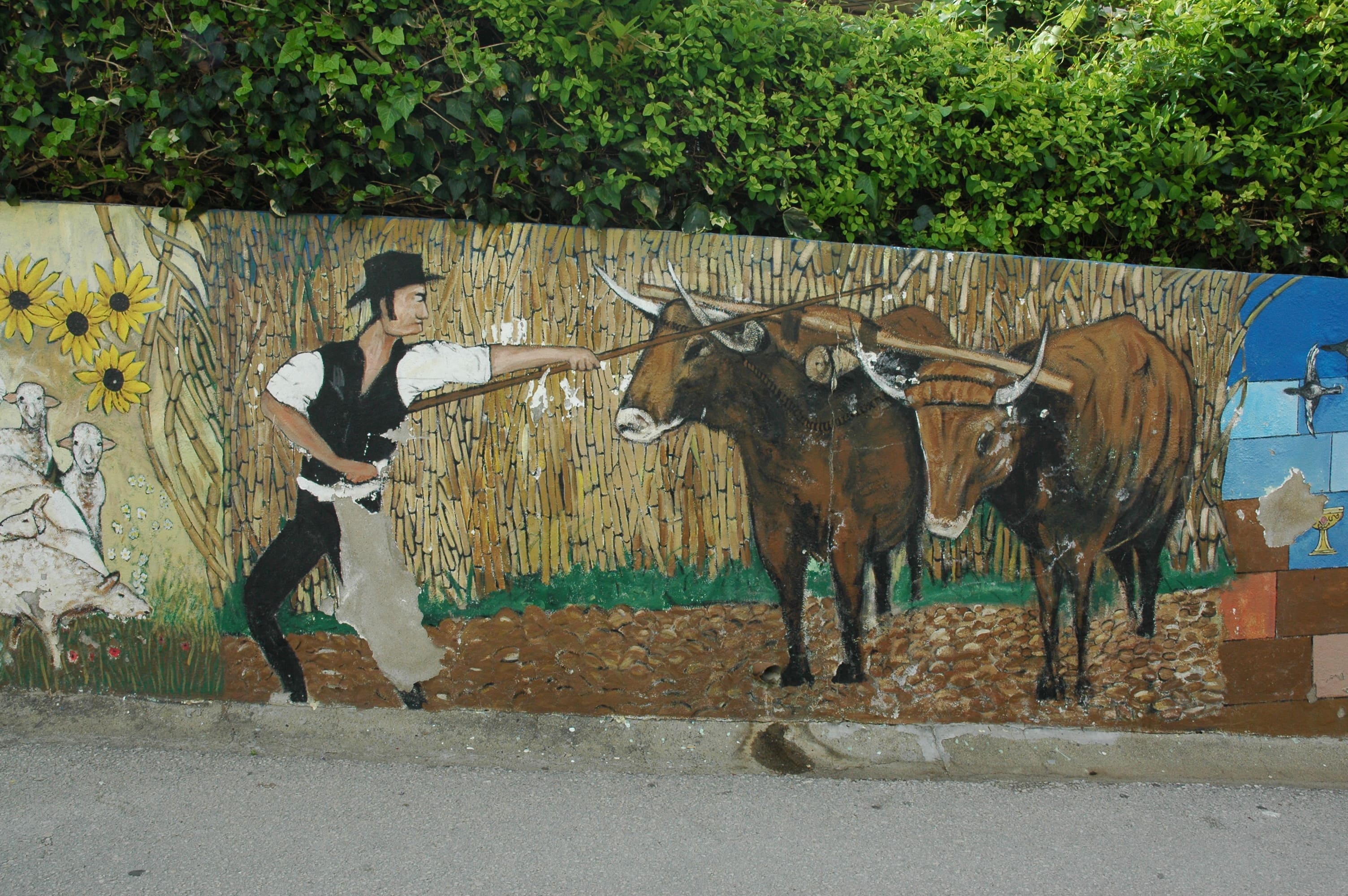MurArte - The Project
The project MurArte is an interdisciplinary research initiated in 2021, financed by national funds, through the Portuguese National Funding Agency for Science, Research and Technology (FCT), under the R&D unit Centre for Technology, Restoration and Art Enhancement - TECHN&ART, of the Polytechnic Institute of Tomar, with the reference UIDB/05488/2020.
This project aims to document the Murals of Riachos, seeking to understand the resource, providing the social context that gave rise to it and the basis for its preservation. The methodology to be followed involves the combination of tools, in a multidisciplinary perspective, which, when juxtaposed, allow for an integrated vision of the theme.



The cataloguing of the murals will be sought to help contextualise them within the wider development of the community. By combining historical and documentary research, inventory, photographic recording and mapping of the murals, it will be possible to obtain a fundamental data archive for decision-making on the preservation and use of these resources. By using forms of self-documentation, such as interviews and survey of those involved, the documentary archive is imbued with a spirit of shared authorship. A participatory community survey will be essential to assess their statement of values and provide a vehicle for gauging expectations and attitudes towards the preservation of the murals. In addition, the collection of testimonies and audio-visual recording, resulting as a final product in a documentary, will allow the local community to become involved in the project making their contribution to public memory a significant means of social agency. The dissemination and gains in local cultural notoriety with global projection, using the web as a vehicle for promotion and connection to the local diaspora is another objective to be achieved. Recognizing that not all murals can or should be preserved, this project analyses the concept of ephemerality, often neglected in the field of preservation, offering a comprehensive approach to treat murals, not based on a vision of perenniality, but rather as a dynamic social practice. Situated on external walls and, as such, subject to various agents of deterioration, these works inevitably have a strong component of impermanence.
A selection matrix will be designed, tested, approved and put into action, based on criteria negotiated with the local population in a collaborative environment where the co-responsibility of all the actors involved in the project is the guarantee of sustainability of the results achieved. The deterioration of the murals negatively affects the aesthetics of the village and can be confused with a low index of socio-economic quality of the place. Therefore, this project will seek to provide tools for monitoring and documenting the state of conservation of the murals in order to assess the mechanisms involved in their degradation or destruction. Thus, a sustained decision on their preservation will be possible, knowing that the conservation or deactivation of the murals will reflect the relevance of the values attributed to the murals by the community and the understanding of the changing cultural landscape as a whole. The multiple dimensions addressed in this project and its specificities as a case study allow us to foresee and highlight its importance in the establishment of a proper methodology and the replicability of the project to other contexts, enabling the establishment of partnerships and collaboration protocols with other entities that are developing similar projects, in order to optimize resources and research platforms, this being another pragmatic objective. In the medium and long term, the natural result of this project will be the dissemination of the murals and their use as a cultural resource, presenting enormous potential both in terms of stimulating research in related areas and in terms of societal impact, such as the creation of a virtual museum or the integration in school activities, namely education through the pictorial-mural heritage, in the supply of places to visit and regional itineraries within this theme and, also, its integration in artistic routes and cultural tourism networks.
A selection matrix will be designed, tested, approved and put into action, based on criteria negotiated with the local population in a collaborative environment where the co-responsibility of all the actors involved in the project is the guarantee of sustainability of the results achieved. The deterioration of the murals negatively affects the aesthetics of the village and can be confused with a low index of socio-economic quality of the place. Therefore, this project will seek to provide tools for monitoring and documenting the state of conservation of the murals in order to assess the mechanisms involved in their degradation or destruction. Thus, a sustained decision on their preservation will be possible, knowing that the conservation or deactivation of the murals will reflect the relevance of the values attributed to the murals by the community and the understanding of the changing cultural landscape as a whole. The multiple dimensions addressed in this project and its specificities as a case study allow us to foresee and highlight its importance in the establishment of a proper methodology and the replicability of the project to other contexts, enabling the establishment of partnerships and collaboration protocols with other entities that are developing similar projects, in order to optimize resources and research platforms, this being another pragmatic objective. In the medium and long term, the natural result of this project will be the dissemination of the murals and their use as a cultural resource, presenting enormous potential both in terms of stimulating research in related areas and in terms of societal impact, such as the creation of a virtual museum or the integration in school activities, namely education through the pictorial-mural heritage, in the supply of places to visit and regional itineraries within this theme and, also, its integration in artistic routes and cultural tourism networks.


